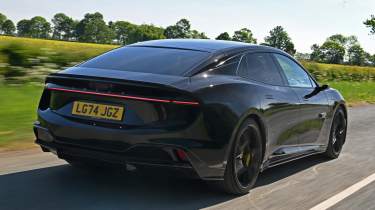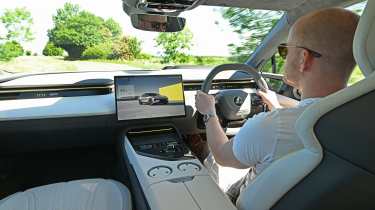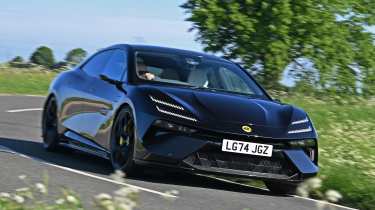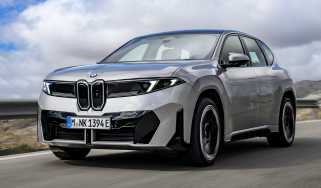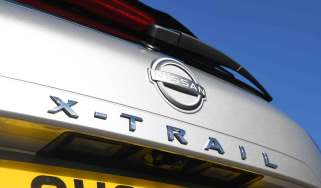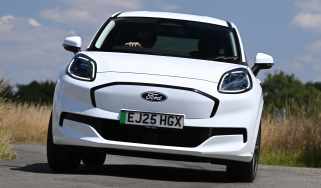New Lotus Emeya 2025 review: the Porsche Taycan has finally met its match
The new Lotus Emeya may not be light, but is great in almost every other way

Verdict
Huge, heavy electric GT cars might not be what most of us expect from Lotus, but with the new Emeya R, it has really delivered. It’s a car that’s as quick as a similarly priced Porsche Taycan Turbo in a straight line, yet more refined and no less sharp – more predictable, in fact – to drive. Add in a similarly sumptuous but more spacious cabin and incredible charging speeds, and it’s only efficiency where the Porsche has an edge. That aside, the Emeya is the better package. We’d still suggest that most buyers could save a lot of money and be as well served by the equally competent Emeya 600 models, though.
The Lotus Emeya 900 Sport Carbon is three times the car the Lotus Elise S2 ever was. Literally. With the new car weighing 2.65 tonnes, it’d take three of Hethel’s mid-engined sports cars to come close to balancing the Emeya sitting on some sort of giant automotive see-saw, and you’d still need about 100 litres of petrol to fully finish the job.
From a marque whose founder coined the mantra “simplify and add lightness”, that kerbweight certainly stings a bit. We’re not sure the carbon-fibre housings for the rear view cameras would have done much to help Colin Chapman warm to the idea, either, when mirrors work just fine and aren’t as complicated.
But we’ll concede that making a direct comparison to a lightweight sports car is a little glib, because while they're the first thing that springs to mind when we hear the name Lotus, it isn’t the first time that brand has gone a little off-piste with a high-performance five-seat GT car. Who can ever forget the Lotus Carlton?
To that end, the Emeya really lives up to its ancestor, because like the Carlton it’s one of the most powerful four-doors (or five-doors, given that the Emeya is technically a hatchback) of its era. There’s no big twin-turbo V6 on this occasion, though; instead, the Emeya has a pair of electric motors – one for each axle – and they combine to offer up an eye-opening 905bhp. If we continue using the S2 Elise as a unit of measure, that’s roughly seven and a half 1.8-litre K Series engines. Torque nearly reaches four figures, at 985Nm.
The Emeya, then, is a hugely powerful, luxurious performance car, which means that it’s competing against a very familiar foe from Porsche. In the 900 Sport Carbon trim that we’re driving here, it’s priced at £139,990 before options – in the ballpark of the Taycan Turbo, if still some way short of the £162,000 Porsche asks for the Turbo S or the near £190k Turbo GT.
And much like the Taycan, this isn’t simply an EV that’s a one-trick, straight-line pony – it has a serious amount of tech to allow that power to be exploited on a twisty road. There’s a two-speed transmission on the rear motor (a similar set-up to the Taycan), multilink suspension all round riding on dual-chamber air springs whose height adjusts through four levels, active aerodynamics, including a four-position rear wing and a retractable front splitter, plus a range of electrical stability programs tailored by Lotus.
Dive into the options list and there are more ways to enhance the performance. Our test car is fitted with optional 22-inch, 10-spoke wheels wrapped in Michelin Pilot Sport EV tyres, and the yellow 10-piston calipers denote a carbon-ceramic brake upgrade; this trims 30kg of unsprung mass from the Emeya’s suspension – and adds £9,900 to the final price.
So how does the car feel on the road? Eerily quiet at first. The Emeya is supremely refined; noise-cancelling tech in the speakers probably helps to take the edge off, but either way, a small pedestrian warning hum at low speeds and a gentle rustle of wind at high speed is enough to drown out what little road roar from those fat tyres makes it inside. It makes it all the easier to appreciate just how superb the Kef sound system really is.
The Lotus is comfortable on long trips, too. A mix of supportive, multi-adjustable massaging seats and a composed high-speed ride makes it deeply soothing. As with most air suspension systems, some sharper shocks like potholes disturb the silence with an abrupt crash, and in the air suspension’s lowest setting, the ride can fidget a touch, but overall it’s a more soothing companion than a Taycan. Indeed, refinement and comfort levels are closer to the petrol-powered Panamera’s than to those in Porsche’s EV. The same Panamera-like manners are found in the corners, too.
Judging suspension settings must be a real head-scratcher for engineers when creating a-super fast EV. Too soft and the amount of squat as all that torque sends the mass rearwards makes the chassis feel like it’s struggling to contain the power; too hard and the ride is terrible and the lack of movement makes it hard to judge the car’s behaviour. Lotus has struck a really sweet balance here, though. The car gently rocks onto its outer tyres and bites into the road with a very neutral, predictable balance - more so than the Porsche, which can start to feel just a touch unruly when pushed hard.
That enormous mass is impossible to hide at extremes – load the car really hard into a corner then demand power and the air springs will gently pogo a little as they run out of travel – but for the most part composure remains deeply impressive. Unlike many fast electric cars, it isn’t the brakes that betray the car’s mass, because the carbon discs give staggering stopping power. They are a bit too grabby for our liking at low speeds and when they’re cold, though. While the steering doesn’t have much feedback, it’s precise and naturally weighted.
And then there’s the performance. Lotus claims a 0-62mph time of 2.78 seconds, and the car feels completely good for it. On a warm, dry day, all four wheels will scrabble around to find the optimum traction as those motors fire the Emeya at the horizon. Even more telling than the acceleration from rest is the time Lotus quotes for accelerating from 50-75mph: just 1.7 seconds.
Use that power on a twisty road, and you’ll need a delicate touch on the throttle, especially because there’s a little more delay in the response of the right pedal than in most rivals, regardless of the driving mode you’re in. Get it right, however, and the loaded tyres dig in, gently push the car around the turn and launch you along the next straight. From the seat of the Emeya, there’s no doubt that EVs can be really thrilling to drive.
There are plenty of luxurious EVs already, though, and inside, the Emeya couldn't be further removed from Lotus models of the past; this is truly a sumptuous, spacious and superbly finished place to sit. The 15.1-inch touchscreen looks sharp and is pretty slick to use, although some on-screen keys are small and we’d like a physical shortcut to disable the mandatory driver-assist systems. But we like the fact that the fan speed can be programmed into physical toggles on the centre console; along with the temperature settings being as a permanent fixture on the bottom of the touchscreen, it means controlling the interior climate is very intuitive.
The key benefit of the Emeya’s cabin over the Taycan’s however, is space. Kneeroom and elbow room are well beyond its German rival’s, and headroom is similar – even with the panoramic roof eating into the space slightly. Our only small gripe is that there’s next to no foot room under the front seats.
At 509 litres, the boot is very roomy, too, and the Emeya’s back seats can be folded down to raise the volume to 1,388 litres. There’s even a modest 34 litres under the bonnet so that the charge cables can be stored separately from the rest of the luggage.
So far, what we consider as the car’s downsides have been small. But to us, the main area it loses out to the Porsche is efficiency. The Emeya gets a fairly sizable 102kWh battery, which is good for a 270-mile range based on WLTP figures. In the unseasonably warm UK spring that accompanied our stint behind the wheel, we were averaging around 2.5mi/kWh, which works out at a 240-250-mile real-world range. According to the trip computer, over the course of the car’s life, the majority of which has been in colder temperatures, that figure has been 2.1 miles/kWh, which drops the range closer to 200 miles.
For some, that will be a little disappointing in a car that otherwise excels over long distances. It’s one compelling reason to go for one of the less potent 600 models; with 603bhp, these versions are still hardly slouches, yet they can travel as much as 109 miles further on a charge, according to WLTP figures.
Fortunately, on the occasions you do need to stop, the Emeya won’t keep you waiting long. Lotus says it’ll charge at a peak speed of 402kW, averaging out at 331kW between 10 and 80 per cent. In our experience, those numbers seem pretty close to the mark. We rolled up at an Ionity charging station without any battery preconditioning, plugged in at 45 per cent, and it immediately hit a speed of 240kW. Even with the battery at 87 per cent, it was still pulling 145kW – superb numbers, and once again right on the money with the Taycan.
| Model: | Lotus Emeya 900 Sport Carbon |
| Price from: | £139,990 |
| Powertrain: | 2x e-motors, 102kWh battery (gross) |
| Power/torque: | 905bhp/985Nm |
| Transmission: | Two-speed auto, four-wheel drive |
| 0-62mph: | 2.8 seconds |
| Top speed: | 159mph |
| Range: | 270 miles |
| Charging: | 402kW (10-80% in 18 minutes) |
| Size (L/W/H): | 5,139/2,123/1459mm |
| On sale: | Now |


